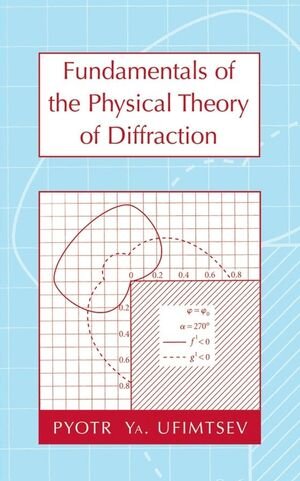
×
![Buchcover ISBN 9780470097717]()
Fundamentals of the Physical Theory of Diffraction
von Pyotr Ya. UfimtsevA complete presentation of the modern physical theory of diffraction and its applications
This pioneering book is the first complete description of the modern physical theory of diffraction (PTD), based on the concept of elementary edge waves. The author, recognized as the world's leading authority on PTD, gives readers a solid foundation in the theory and demonstrates a wide range of practical applications. Readers develop the skills to apply PTD to solve various scattering problems. In particular, this theory can be of interest for designers of military stealth weapons and defense systems. When combined with numerical methods, PTD can also be useful for developing efficient hybrid techniques to analyze diffraction on complex radiating and scattering structures.
Using the example of the diffraction of acoustic and electromagnetic waves at perfectly reflecting objects, the author effectively demonstrates PTD. The derived analytic expressions clearly illustrate the physical structure of the scattered field. They additionally describe all of the reflected and diffracted rays and beams, as well as the fields in the vicinity of caustics and foci. Shadow radiation, a fundamental component of PTD, is introduced and proven to contain half of the total scattered power. The equivalence relationships between acoustic and electromagnetic diffracted waves are established and emphasized.
Throughout the book, the author has taken measures to enable readers to master both the theory and its practical applications:
As the first book to thoroughly cover modern PTD, Fundamentals of the Physical Theory of Diffraction is an essential resource for all researchers involved in designing antennas and solving scattering problems. It is also ideal for students studying high frequency asymptotic techniques.
This pioneering book is the first complete description of the modern physical theory of diffraction (PTD), based on the concept of elementary edge waves. The author, recognized as the world's leading authority on PTD, gives readers a solid foundation in the theory and demonstrates a wide range of practical applications. Readers develop the skills to apply PTD to solve various scattering problems. In particular, this theory can be of interest for designers of military stealth weapons and defense systems. When combined with numerical methods, PTD can also be useful for developing efficient hybrid techniques to analyze diffraction on complex radiating and scattering structures.
Using the example of the diffraction of acoustic and electromagnetic waves at perfectly reflecting objects, the author effectively demonstrates PTD. The derived analytic expressions clearly illustrate the physical structure of the scattered field. They additionally describe all of the reflected and diffracted rays and beams, as well as the fields in the vicinity of caustics and foci. Shadow radiation, a fundamental component of PTD, is introduced and proven to contain half of the total scattered power. The equivalence relationships between acoustic and electromagnetic diffracted waves are established and emphasized.
Throughout the book, the author has taken measures to enable readers to master both the theory and its practical applications:
As the first book to thoroughly cover modern PTD, Fundamentals of the Physical Theory of Diffraction is an essential resource for all researchers involved in designing antennas and solving scattering problems. It is also ideal for students studying high frequency asymptotic techniques.


